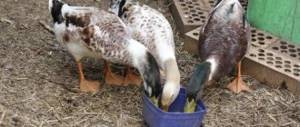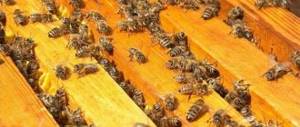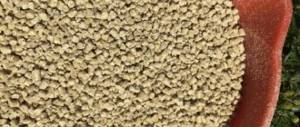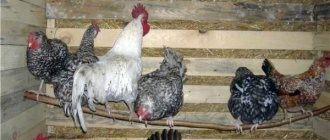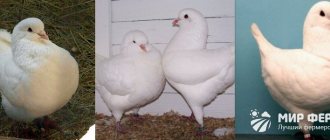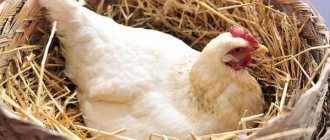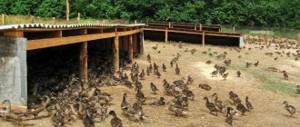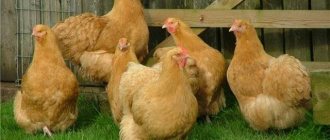What is yeast
In order for the birds to have a good appetite, lay more eggs, gain weight faster, the feed is fermented by adding yeast mushrooms to the ground grain mash, with the help of which it is fermented. This increases the nutritional value, the amount of vitamins and plant insulin, which also has a beneficial effect on their absorption.
In winter, this technique allows you to provide chickens with the necessary doses of protein and other vitamins and microelements. Yeast and feed are also combined with meat and bone meal to fill the chicken’s body with protein, so that growth stimulation does not turn into a problem with tendons that do not have time to grow.
Among the many types of yeast (about 1500), only some of them can be used in food. The raw materials for them are plants or milk. Yeast gets its names depending on its purpose:
- when baking various baked goods, they use bakery ones, which are grown in an environment rich in oxygen, sugar and nitrogenous compounds, distinguishing between wet and dry;
- a beautiful matte coating on the grapes - natural wine yeasts that make the taste of wine special;
- lactic acid products (for example, yogurt) are prepared from a starter culture in which the milky form has formed;
- Having received the wort from hops, brewer's yeast is produced;
- the product is fermented with alcohol in the shortest possible time;
- The raw materials for creating feed yeast are wood and dry agricultural waste (hydrolytic type), alcohol production residues (classic), and non-vegetable base (protein-vitamin).
Is it worth giving
Feeder yeast helps replenish the chicken's body with vitamins, protein and energy, which is released during the oxidation of glucose and carbons. A chicken that lays eggs spends 40% of its energy reserve. And in winter, the cold and lack of greenery add to this. Therefore, poultry farmers must include yeast for chickens in the winter diet.
The nutritional value
The composition of feed yeast contains about 55% proteins. The vitamin and mineral composition is represented by choline, riboflavin, biotin, thiamine, nicotinic and folic acid, and a group of B-vitamins. Lecithin and riboflavin stimulate an increase in egg production because they affect metabolism at the cellular level. Each type of yeast has its own vitamin and mineral complex, which is affected even by cultivation conditions.
Benefit
Farmers who fed their pets with yeast note accelerated muscle growth, increased egg fertility, their size, and quantity, which is especially noticeable in winter. This method is used in the fight against vitamin deficiency, lack of minerals, when it is necessary to help absorb food, digest protein, strengthen the immune system and stimulate appetite.
Flaws
Feed is fermented and given to chickens throughout November, December, January, February, March and part of April. During this period, greens are absent from the diet, so those beneficial substances that come in the summer when walking in the sun must be taken from an alternative source.
There is no need for summer feeding, since an excess of proteins and nitrogen compounds is fraught with diarrhea, inflammation of the cloaca, joints, aggression or cannibalism in the livestock. If some of the listed symptoms appear after introducing yeast during the cold period, then a smaller dose of such feed should be given. Therefore, fortified food is given in small doses with a tendency to increase, monitoring the reaction of the birds and their health.
Tips and tricks
Experienced poultry farmers advise introducing additional ingredients when yeasting grain feed.
- Instead of water, it is useful to use whey or skimmed milk. Milk sugar will provide additional nutrition to yeast fungi, and also enriches the feed with microelements (potassium, magnesium, phosphorus, iron).
- Adding crushed potatoes, beets or pumpkins to the grain mixture enriches the feed with vitamins.
- In winter, it is especially useful to germinate part of the grain before yeasting. Sprouts contain additional energy, they have a positive effect on metabolism and digestion, and remove toxins from the body.
- Yeasting the feed significantly improves the palatability and nutritional value of the grain. Therefore, to prepare yeast, it is advantageous to use low-quality grain: chopped, old (but without bugs and mold!). Yeasting bran and other milling waste will allow you to significantly save on the cost of feed.
Yeasting broiler feed is an inexpensive and simple method that can significantly improve poultry weight gain and improve their health.
Yeast Methods
For enrichment with yeast, grain must be thoroughly ground. Then a method is chosen that is closer to the goal and technical capabilities. Use the sponge, straight or starter method.
Fungi do not tolerate high temperatures, so the water is heated to no more than 38 degrees Celsius. As the bubbles swell, they fill the container, so the food in it is diluted taking into account the need for a spare volume. The yeast should be well dissolved, with no visible particles. To make yeast ferment faster, sugar (1-2 tablespoons) is sometimes added.
Opara
The difference between this technique is that it is a two-stage process. To make dough, take crushed grain mass. For 400 grams of such mash, 20 grams of prepared yeast are diluted in a liter of warm water. After mixing, it swells for 4-5 hours. Then the remaining grain (1600 g) is added to the already risen dough, and a liter of water at room temperature or heated to 36 degrees is added. Fermentation takes 4 hours.
Without dough
For 2 kg of crushed grain you will need 3 liters of heated water and 0.4 g of yeast. The ingredients are turned into a homogeneous mass, which should ferment for six hours. It needs to be stirred at certain intervals so that air has access. The feeding rate is 20 grams per bird. The finished mixture is stored for no more than 24 hours or frozen, but this event reduces the benefits of the product.
Leaven
20 g of yeast and a kilogram of crushed grain are diluted in a liter of heated water. After 6 hours, another 1 kg of grain and 1.5 liters of water are mixed, after which this mixture sits for a day. The dosage is the same as in the straight method.
Feeding standards
Chickens are prone to obesity. Therefore, a feeding schedule is established for them, limiting the portion of food they eat and its composition. In the morning, feeders are filled with homemade mash, mash or mixed feed is offered for lunch, and in the evening, an hour before turning off the lights, crushed grains or mixed feed are offered.
Laying hens
But until the age of eight months, birds are allowed to eat without restrictions for the proper formation of organs. From the third month, food is given according to the strictest standards so that obesity does not reduce egg-laying rates. From the fifth month, laying hens are given laying hens food with an increased amount of protein for proper puberty. It is at this time that yeast is introduced into the diet.
After the start of oviposition, the amount of protein is reduced, and calcium is added instead. If the eggs are white, the dose is divided equally into powder and pieces of 2-4 mm. If yellow, the proportion should be 70% and 30%, respectively.
Broilers
Broiler feed has its own characteristics due to its rapid growth rate. In the first days of life, chicks are not limited in food: eggs and semolina, from day 2 - cottage cheese, etc., from day 5 - food with minerals and vitamins, from day 7 - they are given complete nutrition, even with yeast.
Monitor the presence of calcium, magnesium and phosphorus, which are abundant in meat and bone and fish meal, crushed shell and chalk, and crushed shells. In warm weather, vitamin premixes can be replaced with greens (dandelions, alfalfa, milkweed, clover, scalded nettle), hay flour or sprouted grains.
What to feed broilers at home?
As mentioned above, broilers gain weight fastest on mixed feed. At home, you can use both dry feed and wet mash, combining them with cereals and concentrates.
Dry feed
Dry feed is a mixture of loose granules made from a mixture of cereals. amino acids, protein, fats, vitamins, minerals and proteins.
Regardless of the age of the chicken, it should have constant access to this type of feed. At the same time, the composition of the feed changes as the bird grows. Dry mixtures are purchased in specialized stores or mixed independently. The last option is the most acceptable, since it allows you to make the food more healthy and nutritious.
The composition of dry feed includes:
- fat;
- chalk;
- salt;
- bone (fish) maca);
- cake, meal;
- wheat;
- corn.
As mentioned above, the percentage of individual components changes with the age of the bird.
Wet mash
They are ordinary feed mixed with water, milk, boiled eggs or herbs. There are many options for preparing wet mash. The main rule is the optimal amount of dry mixture and water. Once the mixing is complete, it shouldn't turn out to be porridge; only ducks and geese like it. Broilers prefer the mixture to consist of small, easily crumbling lumps. The mash needs to be kneaded enough so that the birds have enough for one time. Unused porridge is thrown away. Mash that has lost its freshness can provoke the development of intestinal diseases and cause the death of not only young animals, but also adults
You need to feed mash with caution.
Combined nutrition
- For rapid growth and gain of live weight, one type of feed is not enough for broilers.
- The daily diet should be combined. So, in the morning you can mix the birds a mash, give them dry feed for lunch, and in the evening feed them greens from the feed.
- The more nutrients there are in the feed, the faster the broilers will reach the weight required for slaughter.
- It is not advisable to keep birds for more than 2 months, so they should be fed nutritious and high-quality food, which allows them to gain body weight several times faster.
Using BMVD
- Recently, farmers are increasingly resorting to various tricks to accelerate the growth and body weight of poultry.
- One such trick is to feed broilers protein concentrate.
- It cannot serve as the only food for birds, but as a nutritional supplement, it provides significant weight gain, increases resistance to disease, reduces the risk of death of chicks, increases egg fertility, and reduces feed costs per unit of production.
- The use of protein concentrate can increase the productivity of livestock.
- For normal development of the bird, it is enough that the total amount of concentrate in the feed ranges from 5 to 20%. You cannot feed birds exclusively with concentrate.
Feeding without feed
- If you plan to grow them on a small farm where all feed is produced independently, the question arises about the need to feed them with purchased feed.
- Some farmers fear that fattening broilers without feed is impossible. Actually this is not true.
- Most birds are quite omnivorous, therefore, if desired, broilers can be fed with sprouted grains (proteins, proteins), boiled pork skin, potatoes and other vegetables, crushed to a porridge state and mixed with cereals.
- Birds that eat corn and wheat gain weight well. In this case, you can give them grains in their pure form or in the form of cereals.
- You can’t feed corn alone; the birds get fat and may die. But corn can be used as an additive to wheat, potatoes and greens. The main thing is that the feeders are never left empty.
Recipes
Making your own chicken feed takes longer. And if you purchase them, the profitability of such a business will decrease significantly. But only with natural food can you get environmentally friendly products.
For laying hens, the following recipe is suitable: 5 kg of corn, 1.5 kg of wheat, 0.3 kg of peas, 1 kg of sunflower meal, 0.8 kg of meat and bone meal, 0.6 kg of fish meal, 0.5 kg of feed yeast, 0. 15 kg of vitamins, 0.02 kg of salt. For chickens up to 5 weeks of age, yeast is given with caution according to the following recipe: 0.45 kg of corn, 0.15 kg of wheat, 0.1 kg of barley (ground), cake - 0.08 kg, fish meal - 0.05 kg, grass - 0.02 kg, meat and bone - 0.020 kg, feed yeast - 0.020, ground chalk - 0.01 kg, feed fat - 0.020 kg.
It is suitable for chicks of both directions. It is necessary to monitor the reaction to the yeast. If there are any undesirable symptoms, they are excluded from the chickens’ diet.
Proper yeasting of chicken feed at home (with video)
When yeasting feed for broilers, it is advisable to use feed rich in sugar (molasses, sugar beets). The addition of malted barley also promotes better yeast cell development. Feed can be yeasted together with soybean meal, casein, fish and meat and bone meal. Animal feed in the yeast mixture should be no more than 15%.
When fermenting feed for laying hens, you should not use musty and other ingredients unsuitable for feeding, cruciferous plant cakes, cotton cakes and grain waste, which contain seeds of poisonous herbs (cockle, chaff, etc.) and many foreign impurities (soil, garbage). The presence of table salt, chalk, and shells, which worsen the yeasting process, is undesirable in the yeast mass. Feed intended for yeasting should be thoroughly crushed.
Proper yeasting of feed for chickens and other birds occurs successfully only with sufficient access to oxygen in the air. Therefore, the yeast mixture should be stirred as often as possible, in any case, at least twice an hour. The temperature of the yeast mixture should be 25-27 °C, and the air temperature in the room should not be higher than 27 °C and not lower than 15 °C.
The food intended for yeasting must be diluted with clean heated water so that the temperature of the moistened flour mixture is 27 ° C. For example, if the temperature of the dry flour mixture is within 20 °C, the water should be heated to 32-33 °C, and if the mixture temperature is 10 °C, the water should be heated to 40 °C.
For every 100 kg of feed intended for yeasting, you should take 1 kg of fresh pressed baker's yeast. If there is a lack of yeast, this rate can be reduced to 0.5 kg per 100 kg of feed. Each time you need to take a new portion of yeast. Dry yeast is required 3 times less. Approximate order of yeast for 100 kg of dry food: 1 kg of baker's yeast is diluted in 8-10 liters of warm water (not higher than 40 ° C) until yeast milk forms without lumps. Yeast is poured into 140-190 liters of warm water and mixed thoroughly. After this, 100 kg of feed is added. The mixture is kept for 6-9 hours with thorough stirring. Yeasted feed should be fed to the bird within 2-3 hours, as the mixture may sour and mold and harmful bacteria will form in it.
How to yeast chicken feed?
Any backyard chicken breeder, whether a beginner or an experienced one, may encounter feeding problems. Purchasing high-cost feed from a well-known manufacturer does not guarantee high productivity in birds. The reason may be fake food, which leads to the rapid decomposition of vitamins and antioxidants that come in the form of additives. In such a situation, any owner will use all available methods to improve homemade feed so that the chickens can easily digest it. The most popular type is yeast.
Feed preparation
To increase the efficiency of yeasting, the grain must be prepared before starting the process.
- Grinding . Grain particles 2-3 mm in size are better absorbed by the bird’s body. The process of yeast fermentation with crushed grain occurs faster.
- Cooling (pouring boiling water) over grains leads to the conversion of the starch contained in the grains into sugar, which the yeast fungi feed on.
The introduction of grated potatoes or sugar beets, molasses, and old jam into the grain mixture in an amount of up to a third of the total weight helps the fermentation process to proceed more intensely.
Adding sprouted grains to the mash (up to 5 g per chicken) enriches the diet with biologically active substances that sprouts are rich in.
Read also: What does a sheep look like photo
What should be included in the diet of chickens
The high productivity of birds affects the consumption of large amounts of feed. But not every owner pays close attention to what his chickens eat. A lack or excess of microelements leads to the fact that birds begin to peck at each other, get sick and show low productivity. The shortage especially affects young animals, which affects the survival rate of the livestock and can often cause death.
The feeding rate depends on which direction the herd belongs to:
- egg;
- meat;
- mixed;
- broiler
The average amount of food that individuals belonging to the mixed or egg direction should receive after 21 weeks of life is 150 grams per bird per day.
Most farmers stick to three feedings a day, but there are differences in the diets of birds before and during the egg-laying period. Until the 32nd day, laying hens can be fed ad libitum, and with the onset of egg laying, it is already necessary to begin to limit the birds so as not to cause obesity, which will lead to inevitable health problems.
From 21 weeks, laying hens are transferred to the diets of adult birds, without a transition period. This technique allows the reproductive organs to quickly develop. As soon as the first eggs begin to appear, the need for calcium will increase, and until this point the birds should receive as much protein feed as possible.
Any food is determined according to the most important criteria:
- energy;
- raw protein;
- 13 amino acids;
- raw fat;
- linoleic acid;
- crude fiber;
- 14 vitamins;
- 11 mineral compounds.
The most important indicator is energy, which determines the direction in poultry farming. Egg hens expend about 40% of their energy during laying. The required number of calories used to calculate metabolic energy can be obtained from:
- squirrel;
- fat;
- nitrogen-free extractive substance.
What is included in yeast mash?
By simply introducing yeast into the feed mixture, it is impossible to meet the poultry’s need for all vitamins and microelements.
The basis of bird food is carbohydrate feed - this is grain. It is not advisable to give it in its entirety; it is much more profitable to crush or flatten it. In winter, grain is sprouted to enrich the product with vitamins.
The basis of bird food is carbohydrate feed - this is grain
The following additives must be added to the food: vegetables, fresh or dried chopped grass, fruits and berries, dairy products (skim milk, curdled milk, cottage cheese), sunflower oil or cake, meat trimmings.
For broilers
The menu for broilers is designed so that the protein content in the feed does not fall below 22-24%.
An example of a self-composed daily diet for a broiler aged 1.5-2 months:
- crushed grain (corn, wheat, barley, peas) – 100 g;
- sunflower cake – 10-15 g;
- yeasted product – 20 g;
- boiled potatoes – 40 g;
- salt – 1 g.
For laying hens
Unlike feeding a broiler, the diet of a laying hen is not as nutritious. It is richer in vitamins.
Approximate winter feeding of laying hens when preparing their own diet:
- crushed grain mixture (corn, wheat, barley, peas) – 70 g;
- yeast product based on the specified grain mixture – 20 g;
- wheat bran – 15-20 g;
- boiled potatoes, raw carrots and pumpkin, cabbage (in equal parts) – 20 g;
- herbal flour – 5-7 g;
- salt – 1 g.
For high productivity of laying hens in winter, the birds are provided with plenty of crushed shells, lime or chalk. These substances serve as a source of calcium necessary for the strength of egg shells.
For turkeys
Modern fast-growing turkey-broiler crosses are demanding in terms of feeding. They need a balanced composition, rich in protein and energy.
Modern fast-growing turkey-broiler crosses are demanding in terms of feeding
It is impossible to make such food at home. Heavy-cross turkey poults should be fed high-quality fresh industrial feed developed specifically for them.
It is allowed to additionally give fresh herbs and dairy products (cottage cheese, yogurt) to improve the taste of meat.
Turkey poults of light and medium-heavy breeds are more unpretentious.
The following mixtures are prepared for them at home:
- crushed grain (corn or peas, wheat) – 60%;
- yeast product – 20%;
- greens and vegetables – 20%.
What you need to know about essential vitamins and minerals
Not only energy and protein are important for chickens, a special role is given to micro- and macroelements, as well as vitamin complexes. Most owners, when purchasing food, first consider these indicators.
Despite the fact that the need for vitamins is not so high, birds with a lack of them may develop a deficiency. An unbalanced diet, even in a short period of time, will lead to feathers falling out and egg laying to stop.
Essential minerals and vitamins
In addition to energy and protein, all birds need macro- and microelements and vitamins for harmonious development. In recent years, much attention has been paid to the content of these substances in ready-made and homemade feeds.
The need for vitamins and minerals is minimal, but because of this, birds quickly develop deficiencies. Unbalanced feeding for a couple of weeks is enough for chickens to develop symptoms: cessation of laying, loss of feathers.
Feather loss is one of the symptoms of unbalanced feeding.
The need for minerals is high in birds of all directions. For egg-laying hens, the need for calcium balance is determined by egg production. The daily calcium requirement for breeds with high egg mass reaches 4.5 grams.
Powdered calcium
However, there are differences in the size of the granules depending on the color of the shell. Chickens that lay white-shelled eggs should be offered half the calcium in powder and half in granules 2-4 mm in diameter. If the shell is brown, then 30% of the calcium is offered in powder form and the rest in coarse grains. This difference is associated with the timing of the final formation of the shell - the white shell is formed after turning on the light, later. This means that the bird will need easily digestible calcium powder.
Calcium granules
Important! Easily digestible powdered calcium is already in the shell after 30 minutes.
For meat and broiler breeds that have low egg production, the need for minerals is determined by large bones. Phosphorus, calcium, magnesium make up the basic structure of bone tissue. Its rapid formation in young large breeds of chickens requires a large amount of minerals in the feed. This need is provided by fishmeal, meat and bone meal and calcium in any form.
Fish and meat and bone meal
Fishmeal prices
Fish meal
About methods of preparing feed
Balanced composition is far from the most important factor in choosing food; how it will be digested plays a big role. To increase digestibility, feed must be properly prepared. The table will indicate the most popular methods of preparing mixtures for feeding.
Used by all chicken owners. Small fractions are widely used for feeding young animals. Older young animals are fed by switching to larger granules—compressed ones.
Heat chicken feed to improve digestion. During frosts, not only wet food is heated, but also water, incl. adult birds. Some types of vegetables included in the poultry diet are boiled. Drying is used during summer preparations for winter.
Treatment with various types of acids
Practically not used in private households. This will require careful calculations, which are made only in large-scale production or factories.
Use of infrared radiation
Refers to expensive measures that are applied at the level of industrial factories. The use of rays makes it possible to disinfect feed and destroy harmful microflora.
It is used almost everywhere in all farms, regardless of size. From a small farm to a large poultry complex.
Yeast technology
Initially, the feed is crushed; the success of the process directly depends on the size of the fractions; the smaller the better. You need to take:
- feed in the amount of 1 kg;
- wet yeast - 20 grams, dry yeast in the amount of two tablespoons;
- warm water - one and a half liters.
The container in which the yeast will take place must be large. This is due to the fact that during the process the mixture will increase in volume several times. The water temperature should not exceed 40 degrees to prevent the yeast from dying. The room for the process must have good ventilation and a temperature of at least +20 degrees. There is nothing complicated about the technology itself.
How to propagate yeast:
- Dilute the yeast in a faceted glass, stir until all the lumps disappear.
- The resulting mixture is poured into a liter of warm water or whey. Re-stirring occurs.
- The resulting solution is poured into the grain and, if desired, granulated sugar is added in the amount of several spoons.
- The mixture is left alone for 8 hours.
- If in the first two hours the liquid begins to be actively absorbed, then add warm water, but no more than two glasses.
- While cooking is in progress, the mixture must be thoroughly mixed and preferably more than once. It is recommended to do this once every 60 minutes.
- Insufficient mixing greatly reduces the efficiency of the process. During the reproduction stage, yeast needs oxygen, which it receives in sufficient quantities by stirring.
After preparation, feed is given at the rate of no more than 20 grams per head per day. It is important to remember that such food is not stored for a long time, with the exception of deep freezing, but even here they can last no more than 7 days.
There are two more methods of yeasting: using sourdough and sourdough. But the process described above is the least labor-intensive and simple.
Yeast for chickens
The introduction of feed yeast into the diet of poultry helps to enrich the feed with protein.
This is a cheap way to increase the nutritional value of grain feed and, as a result, increase egg production and weight gain from poultry.
Feeder yeast is used in the production of compound feed, and is also a food additive to the basic diet of laying hens.
We will talk about whether the use of yeast is effective and how to properly feed it to laying hens in this article.
How to give yeast to broilers when growing at home
Raising broiler chickens on a home farm allows you to provide your family with tender and tasty meat. Most poultry farmers try to feed their poultry with natural products: grain, vegetables and potatoes, without resorting to industrial feed. This method of fattening allows you to obtain environmentally friendly meat. When compiling a diet for broilers, it is necessary to include in the menu, in addition to grains and vegetables, various additives that increase the nutritional value of homemade feed. One such additive is yeast. In this article you can get detailed information on how to properly feed yeast to broiler chickens.
Advantages and disadvantages
Benefits of using yeast for eggs:
- Fertility increases;
- size increases;
- egg production of chickens in winter increases by 23.4%;
For meat:
- accelerates the growth of muscle mass (for chickens this figure is 15.6%);
For birds:
- improves appetite;
- prevents vitamin deficiency;
- increases feed digestibility;
- stimulates the production of immune cells;
- regulates protein metabolism;
- increases protein digestibility;
- the supply of beneficial vitamins and microelements increases.
Enriched feed is given to birds only from November to April, i.e. during the absence of greens in the diet. The presence of grass and sun in the summer is sufficient to maintain all processes in the body of chickens.
Fungi in the summer diet lead to an excess of protein and nitrogen compounds.
The following pathologies arise from an excess of proteins:
- diarrhea in chickens;
- inflammation of the cloaca as a result of metabolic disorders;
- joint inflammation;
- cannibalism in a flock.
In order to avoid painful conditions, yeast feed is introduced in several passes, starting with small dosages - 5-7 g per chicken.
If the disease appears suddenly, it is necessary to reduce the amount of fortified feed by 50-70%.
Why do chickens receive feed yeast?
At the peak of egg laying, the laying hen needs nutrition with a high content of protein, vitamins and microelements.
Read also: How long does a chicken live: domestic, layer, broiler
At the peak of egg laying, the laying hen needs nutrition with a high content of protein, vitamins and microelements
Feed yeast contains:
- 40-50% protein in a form accessible to poultry;
- B vitamins;
- riboflavin;
- nicotinic and folic acids;
- choline;
- thiamine
The inclusion of yeast feed in the diet of laying hens (especially in winter) increases the egg production of chickens by 20-25%. The weight of each egg increases by 15-20%.
Adding yeast to the feed in the spring increases the fertility of eggs and the quality of the hatched young.
When raising poultry for meat, yeast fungi help the body most fully absorb nutrients from the feed.
In broilers and young turkeys, an accelerated increase in muscle mass is observed (by 12-16% compared to poultry that does not receive yeast).
The entire bird's appetite improves and the immune system is strengthened.
How to give yeast to laying hens?
Give every day or every other day. The optimal daily amount is 20 g of product per individual.
Feeder yeast should be included in the diet of birds from mid-autumn to mid-spring. During the warm months, chickens eat a lot of fresh food, so they do not need yeast feeding.
The shelf life of home-prepared food does not exceed a day.
If you have prepared a lot and don’t want to throw it away, you can freeze the unused portion, but after defrosting it will be less useful.
How to properly feed feed yeast to chickens?
The most pressing issues in using feed yeast to feed chickens are: how often can you feed yeast mixtures, how much to give and how long to store.
Follow these rules: feed approximately 20 g of mixture per bird daily or every other day. The shelf life of the finished mixture is no more than 24 hours. If necessary, you can freeze a certain amount of the feed mixture, but the benefit from such food after defrosting will be significantly less.
As you can see, the yeast process is quite simple and does not require any extra effort, and, what is especially important in poultry farming, additional financial costs. To these circumstances should be added the undoubted benefit of this method of feeding in the cold season, its naturalness, and, therefore, good digestibility by poultry.
Composition of feed yeast
Compound:
- protein – 32-55%;
- fiber – 1.2-1.9%;
- fat – 2.2-3.1%;
- ash – 10%;
- dietary fiber – 1.8%.
According to GOST 20083-74, dry feed yeast must contain:
- vitamins B, C;
- minerals: phosphorus, chromium, nickel, potassium, sodium, iron, selenium, calcium, zinc, manganese, etc.;
- lysine, methionine, tryptophan.
Composition and pharmacological properties
For the production of feed yeast, special microscopic yeast fungi are used: Hansenula, Candida, Saccharomycetes, Torulopsis and others. Microorganisms act as producers of feed protein. The nutrient medium for fungi is plant waste or post-alcohol stillage, which is part of the yeast.
What yeast do you give to chickens?
Bakery
45.79%
Feed
54.21%
The protein produced by fungal microorganisms is absorbed in the bird's body by 95% and increases the nutritional value of feed.
In terms of the content of B vitamins, feed yeast for chickens is superior to all existing protein supplements. These substances play an important role in the bird’s body:
- contribute to the normal development and growth of young animals;
- regulate carbohydrate, protein and fat metabolism;
- increase egg and meat productivity;
- prevent the development of obesity;
- responsible for feather formation;
- increase immunity and reduce mortality rates;
- are an additional source of energy;
- improve appetite and digestion.
In addition to B vitamins, yeast contains phosphorus, calcium, retinol, tocopherol and provitamin D. The latter substance is responsible for the absorption of calcium in the body, helps strengthen bones, increase the strength of eggshells, and prevents the development of rickets in young animals.
Additionally, the composition contains the entire necessary complex of essential amino acids involved in the formation of feather cover, building muscle mass, and metabolism. Bioactive compounds also play an important role in poultry egg laying.
What is yeasting?
Yeast is a single-celled fungus that is used to ferment the liquid mass of a product. Feeder yeast is a light brown bulk substance used to stimulate the growth of birds.
Yeasting is the process of fermenting ground grain feed with yeast starter.
During processing, the mixture is additionally enriched with vitamins and plant insulin. The biological value of the product increases, and the digestibility of nutrients also increases.
The purpose of yeast is to improve the appetite of chickens, increase egg production, and accelerate weight gain in meat breeds.
Nutrition using fortified feed is especially important in the winter season, because... enriches the chickens' diet with missing vitamins and microelements.
You can ferment grains, cereals, and components of plant origin. When fortifying, meat and bone meal can be added to the diet to increase nutritional value.
Yeast Methods
The grain mass is first crushed. For a proper process, it is important that the fractions are as fine as possible.
Yeast methods are:
Peculiarities:
- The water temperature should not exceed body temperature i.e. 36-38°C. At higher temperatures, the fungi die.
- The container in which the mass is stirred should be 2/3 larger than the volume of the diluted feed, because During fermentation the volume increases.
- The yeast must be completely dissolved, without forming lumps. To speed up the process, you can add 1-2 tablespoons of sugar.
Dough method
The sponge preparation method consists of two stages: kneading the dough; yeasting of feed. The dough is prepared from 200 g of grain mass and 10 g of yeast, diluted in 0.5 liters of warm water.
The dough is suitable for 4-5 hours. Then it is mixed with the rest of the grain - 800 g and a liter of warm water. Leave for 4 hours.
Important! Some types of yeast are opportunistic pathogens that, when interacting with the body, cause inflammatory processes.
Therefore, use only yeast obtained from a proven source when preparing feed for laying hens.
Without dough
Recipe: for 1 kg of grain mass take 1.5 liters of warm water and 0.2 g of yeast. Combine the yeast mass and grain, mix and leave to ferment for 6-7 hours.
During the fermentation process, the mass must be stirred periodically, because Air access is important for work.
If during the fermentation process the liquid is completely absorbed into the mixture, you need to add 1-2 cups of warm water. The mass can be given to chickens after 8 hours, at the rate of 20 g per 1 chicken.
Yeast can be given daily or every other day. Ready-made enriched food can be stored for no more than 1 day.
It is permissible to freeze part of the feed for several days, but the benefit from use is significantly reduced.
Leaven
10 g of yeast are dissolved in 0.5 liters of warm water. Add 0.5 kg of grain mass. Leave for 6 hours. Then add the remaining grain - 0.5 kg and 0.750 liters of water, stir and leave for a day. Feed is given to birds at the rate of 20 g per 1 chicken.
More efficient yeasting
To make each yeast method effective and of high quality, you can improve the composition of the feed mass by enriching:
- Warm water can be replaced with warm whey. Whey will complement the mass with milk sugar, whey protein, casein, as well as microelements - potassium, magnesium, phosphorus, iron. In addition, the serum contains B vitamins, ascorbic acid, tocopherol, choline and others.
- Adding sugar increases the amount of food for yeast development and increases the nutritional value of the feed by 15-20%.
- Adding vegetable mass - boiled beets, potatoes, pumpkin increases the variety and quantitative composition of the vitamin complex.
- The addition of sprouted grains also improves the composition of the feed. Sprouted grains are biostimulants. They have antioxidant properties, normalize metabolism, have a beneficial effect on the digestive process and promote the development of beneficial intestinal microflora.
How to give yeast for laying hens?
Good afternoon, experienced and novice poultry farmers. Many people practice using yeast for laying hens in winter and yeasting feed. The most difficult time for domestic feathered animals is in winter, when the diet lacks greens (a source of biologically active substances), pasture in the form of worms, and insects.
Add to this the rare days that allow birds to be released into the walking area. All this is the reason for the need to enrich the chicken diet with various additives, including yeast.
Does poultry need yeast?
Looking ahead, the answer is yes.
A common way to increase the nutritional value of feed mixtures is by yeasting one or more of its ingredients. This trick has a positive effect on the cost of feeding egg and meat products.
We have already talked about the scarcity of the winter diet according to biologically active substances. This phenomenon usually makes itself felt in winter. Therefore, laying hens and brood hens at this time are fed mixtures that include fermented ingredients.
Fermentation is more effective when the fungus is provided with the amount of carbohydrates required for normal life, which are abundant in the grain. Therefore, yeast is added to the grain portion of the diet. Completed or passive fermentation is the result of starvation of the microorganism. How to solve such a problem? It is necessary to enrich the wort with sugar (2 tablespoons).
About the pros and cons of using yeast
Thanks to yeast:
- The likelihood of vitamin deficiencies is excluded;
- chickens are more willing to consume and pay for feed better in products;
- the digestibility of nutrients improves;
- poultry resistance to pathogens increases;
- metabolic processes, work and condition of the endocrine system are optimized;
- The size, yield of fertilized eggs and egg production increases in winter (by 15-20%).
- quantitative and qualitative indicators of meat productivity are improved.
Average daily gains in muscle tissue of broilers increase by 13-14%. By the way, without yeast, poultry often gets fat.
Abuse of yeast in the summer is fraught with:
- Firstly, diarrhea;
- secondly, inflammatory processes affecting the joints and cloaca;
- thirdly, egg pecking and cannibalism.
Just wondering! About 0.5 thousand species of yeast fungi are known. Thousands of strains have been identified within each species. Just imagine, 5000 years ago yeast was used by Egyptian brewers.
How to give yeast for laying hens
Nuances of yeast technology:
- Of course, finely grind the grain.
- Using 36-38 degree water.
- The maximum volume of steamed feed with yeast is 40% of the container volume.
- Using yeast diluted to a uniform consistency.
Mastering yeast.
The method consists of kneading the dough and actually yeasting it.
The dough is made. For example, ground food (190-210 g) + dry yeast (10 g) + water (0.5 l). A prerequisite is the use of 36-38 degree water. After thorough mixing, the mixture is kept warm.
It takes about 3 hours (+/- half an hour) for the dough to mature. After this time, water (1 l) and 0.8 kg of feed mixture are reintroduced into the composition. The whole thing sits for up to 5 hours in a warm room.
You can do without dough. In this case, the list of ingredients consists of ground grain (1 kg), water (1.5 l) and baker's yeast (20 g). The well-mixed mass is kept warm for 7-8 hours. Periodic stirring is required.
Secrets of improving feeding
Using our tips, you will increase the efficiency of yeast:
- Replace water with 36-38 degree whey. It contains a lot of carbohydrates, protein, and BAS.
- In order to increase the nutritional value of the mixture, supplement it with sugar - a nutritional element for yeast fungus.
- Enrich winter mash with grated vegetables, for example, zucchini, potatoes, beets. This will improve the carbohydrate, mineral and vitamin part of the feed mixtures.
- Before adding yeast, include sprouted grain in the composition, which is beneficial for all age and sex groups of poultry.
Feed yeast for laying hens or regular baker's yeast?
Instead of a conclusion, we will introduce you to the most interesting facts:
- Nature has deprived some representatives of the species of the ability to lay eggs. The reason for this is a narrow pelvis and other natural defects;
- egg production indicators of chickens increase until 2 years of age, and then decrease by 10% per year;
- chickens remember the “faces” of their “neighbors”;
- according to scientists, chickens have Asian roots;
- the oviposition process stops in the absence of light;
- the formation of an egg is a 25-hour process, the Brown Nick breed can have 2 eggs a day, don’t be surprised;
- In the last century, a record was set in America for the life expectancy of a rooster after partial cutting off its head - 1.5 years.
Types of yeast
The action of yeasts has been used in food production for thousands of years. The fungi themselves today number more than 1,500 species.
They can be obtained from almost any raw material of plant origin, as well as from milk.
Only a few of them are widely used in the food industry.
The name of the yeast reflects the main purpose of its use:
- bakery - used for baking. They are grown in an environment enriched with oxygen, sugar and nitrogen compounds. Available in dry and wet form.
- wine - can be observed in the form of a coating on grape berries. They help improve the taste of wine products.
- dairy - are formed in the leaven. Used for the preparation of lactic acid products.
- beer - prepared by fermenting beer wort, which is obtained from high-quality hops.
- alcohol strains are strains created specifically for the alcohol industry. Their task is to ferment the product as quickly as possible.
Feed yeast can be:
- hydrolytic - created from wood and dry agricultural waste;
- classical - obtained from alcohol production waste;
- protein-vitamin - grown on waste non-plant raw materials.
